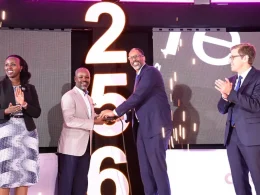By Mark Kawalya
An international team led by the IAEA has completed its initial review of Uganda’s uranium production cycle. Requested by the Ugandan government, the mission evaluated the country’s potential to develop a uranium exploration program. The long-term goal is to use uranium for domestic power generation and incorporate nuclear energy into the country’s clean energy strategy. The target is for an electricity access rate of over 99% by 2030 for its nearly 50 million Ugandans. Currently, only about half of the population has electricity. The government plans to achieve nuclear power generation by 2031, utilizing uranium sourced domestically.
The first Integrated Uranium Production Cycle Review (IUPCR) mission, backed by the IAEA’s technical cooperation program, assessed the infrastructure needed for Uganda’s uranium exploration, marking the first phase of their uranium production cycle. The mission included 82 participants, mainly from Uganda’s Ministry of Energy and Mineral Development, and involved a site visit to ongoing exploration activities. Experts from Argentina, Australia, France, Namibia, and the IAEA evaluated 16 critical areas. These include human resources and regulatory frameworks as well as providing recommendations to help Uganda achieve its nuclear energy goals, which hinge on a local uranium supply.
Adrienne Hanly, IAEA’s Technical Lead for Uranium Resources and Production, stated, “Discovering and developing uranium resources in Uganda is a significant step towards incorporating nuclear power into the country’s energy mix. While substantial work remains, the Ministry of Energy and Mineral Development now understands what’s needed to evaluate Uganda’s uranium prospects and advance the next steps.”
Although several regions in Uganda are considered potentially rich in uranium, confirmed resources have yet to be identified. Final determination involves activities like radiometric surveys and geochemical sampling.
Ruth Nakabirwa Sentamu, Uganda’s Minister of Energy and Mineral Development said the Government of Uganda is committed to adopting international best practices and this IAEA mission will ensure uranium exploration is done according to international standards.
The IUPCR team’s recommendations emphasized the need to develop skilled personnel for uranium exploration. Additionally, there is need to accelerate the discovery and assessment of uranium resources through a well-funded exploration program. This mission is part of a four-year IAEA Technical Cooperation Project supporting uranium exploration and evaluation, which began in 2022. Uranium exploration is a priority in Uganda’s 2024-2029 Country Programme Framework.
Anna Grigoryan, IAEA Programme Management Officer for Uganda, expressed strong support for enhancing the technical capabilities of the Directorate of Geological Survey and Mines, focusing on skill development and exploration tools to effectively explore and evaluate Uganda’s uranium occurrences.








